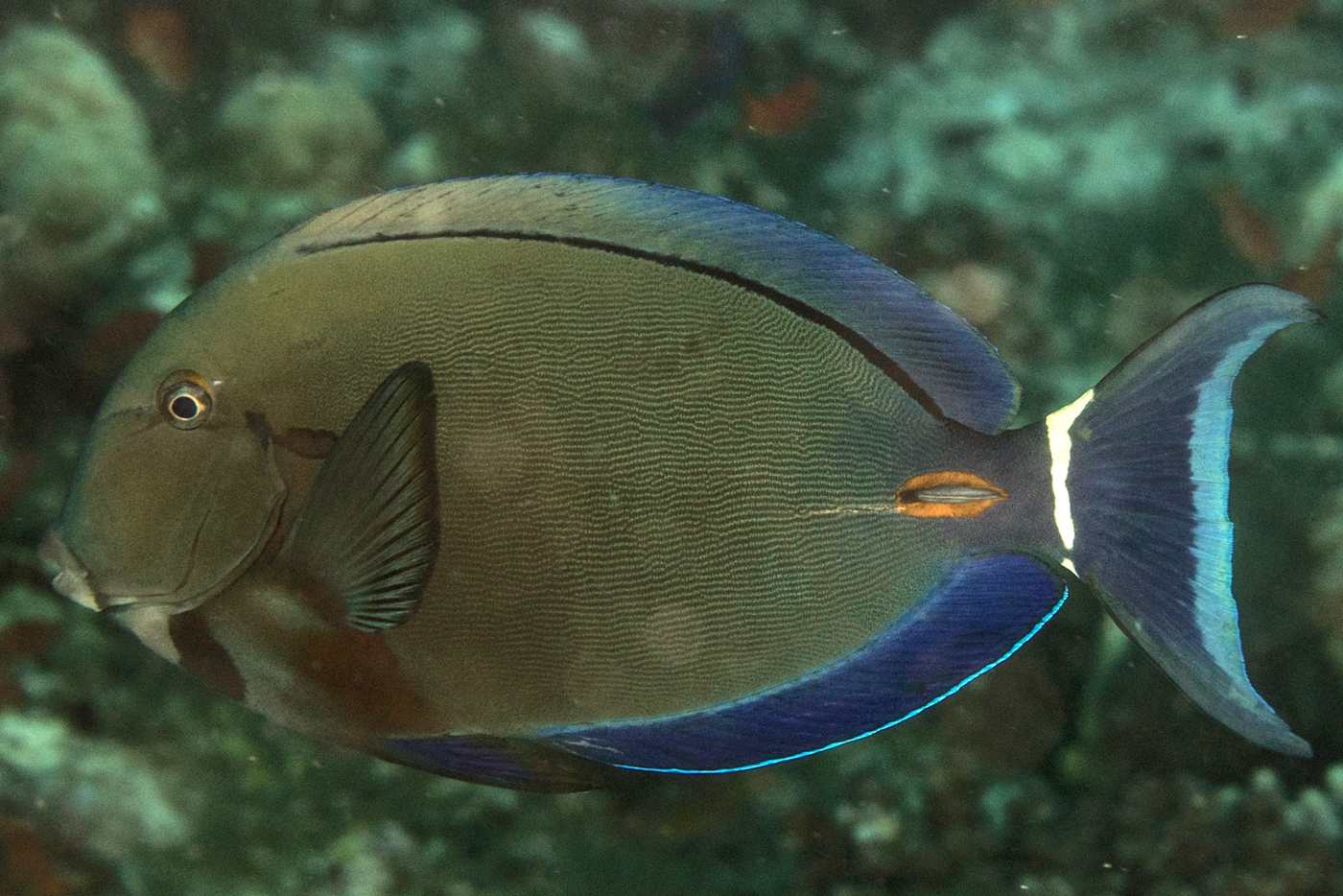| Citation |
|
Description |
Western Indian Ocean: Mozambique (Ref. 41878). Indo-West Pacific: Seychelles (Ref. 10685), Philippines, Indonesia and Great Barrier Reef; recently found in Maldives. Reported from Malaysia (Ref. 5756) and Samoa (Ref. 592).
Geographic Range [top]
Range Description: Acanthurus auranticavus is found from the Philippines, Indonesia, Great Barrier Reef, Australia, Maldives and Seychelles (Randall 2001a). It was reported from Ashmore, Scott and Rowley Shoals (J.H. Choat pers. comm. 2010), Malaysia (Mohsin et al. 1993), Samoa (Wass 1984), western Solomon Islands (Aswani and Lauer 2006) and Papua New Guinea (Allen et al. 2003). It was recently recorded from Christmas Island (J.H. Choat pers. comm. 2010). Records from Samoa and Viet Nam need to be verified (K.D. Clements pers. comm. 2010).
Countries occurrence:
Native:
American Samoa; Australia; British Indian Ocean Territory (Chagos Archipelago); Brunei Darussalam; Christmas Island; Fiji; Indonesia; Malaysia; Maldives; Marshall Islands; Papua New Guinea; Philippines; Seychelles; Singapore; Thailand; Timor-Leste
FAO Marine Fishing Areas:
Native:
Indian Ocean – western; Indian Ocean – eastern; Pacific – eastern central; Pacific – western central
Additional data:
? Lower depth limit (metres): 8
? Upper depth limit (metres): 3
Range Map: Click here to open the map viewer and explore range.
Population [top]
Population: Acanthurus albipectoralis has been recorded as abundant in deep stations at the Nha Trang Bay Marine Protected Area (MPA) (Nguyen and Phan 2008). This deep water record from Viet Nam is doubtful on the basis that this species has only been observed on reef flats and reef crests in other parts of its range (i.e., Great Barrier Reef) and similar species (A. blochii, A. grammoptilus and A. xanthopterus) have not been observed during the Viet Nam survey (K.D. Clements pers. comm. 2010). Visual census surveys along Aceh coast, Indonesia, recorded fish densities of 4 individuals/750 m2 at Teluk Pelabuhan (FMIPA 2007).
Current Population Trend: Unknown
Additional data:
? Population severely fragmented: No
Habitat and Ecology [top]
Habitat and Ecology: Acanthurus auranticavus inhabits shallow reefs, both in lagoons and outer reef areas. It is generally associated with hard substrata (K.D. Clements pers. comm. 2010). It is often encountered in feeding aggregations, sometimes consisting of more than 30 individuals (Randall 2001a). It was recorded as a major resident species on shallow inner lagoon reefs, mid-depth inner lagoon reef and lagoon pool and reef channel in the Baraulu MPA, Western Solomon Islands (Aswani and Lauer 2006). A. auranticavus feeds on detritus and sedimentary material (Choat et al. 2004). Maximum age is 30 years (Choat and Robertson 2002). It is classified as a grazer/detritivore (Choat and Bellwood pers. obs. in Green and Bellwood 2009).
The sexes are separate among the acanthurids (Reeson 1983). Acanthurids do not display obvious sexual dimorphism, males assume courtship colours (J.H. Choat pers. comm. 2010).
.
Systems: Marine
Use and Trade [top]
Use and Trade: Acanthurus auranticavus is captured for food in parts of its range. It is one of the most commonly consumed species on Brooker Is., Papua New Guinea (Allen et al. 2003). It is harvested incidentally in the Philippines.
Threats [top]
Major Threat(s): There are no major threats known for this species.
Surgeonfishes show varying degrees of habitat preference and utilization of coral reef habitats, with some species spending the majority of their life stages on coral reef while others primarily utilize seagrass beds, mangroves, algal beds, and /or rocky reefs. The majority of surgeonfishes are exclusively found on coral reef habitat, and of these, approximately 80% are experiencing a greater than 30% loss of coral reef area and degradation of coral reef habitat quality across their distributions. However, more research is needed to understand the long-term effects of coral reef habitat loss and degradation on these species populations. Widespread coral reef loss and declining habitat conditions are particularly worrying for species that recruit into areas with live coral cover, especially as studies have shown that protection of pristine habitats facilitate the persistence of adult populations in species that have spatially separated adult and juvenile habitats (Comeros-Raynal et al. 2012).
Conservation Actions [top]
Conservation Actions: There are no species-specific conservation measures in place for this species. Its distribution overlaps several marine protected areas in parts of its range.
Citation: Russell, B., Nanola, C., Choat, J.H., Stockwell, B., McIlwain, J., Clements, K.D., Rocha, L.A., Abesamis, R. & Myers, R. 2012. Acanthurus auranticavus. The IUCN Red List of Threatened Species 2012: e.T177974A1508352. http://dx.doi.org/10.2305/IUCN.UK.2012.RLTS.T177974A1508352.en. Downloaded on 04 September 2018.
Disclaimer: To make use of this information, please check the .
Feedback: If you see any errors or have any questions or suggestions on what is shown on this page, please provide us with feedback so that we can correct or extend the information provided
|

